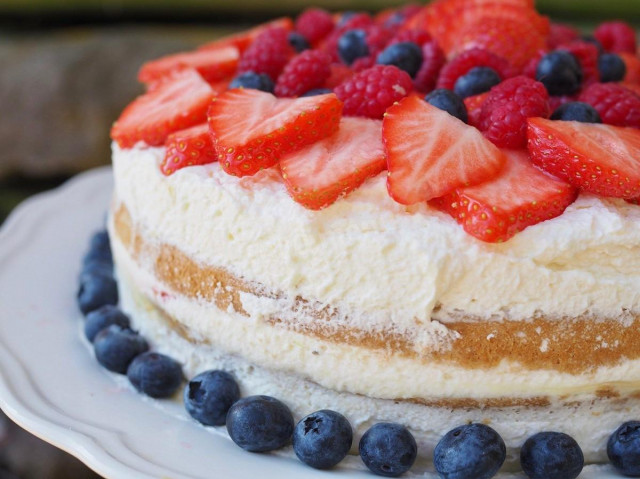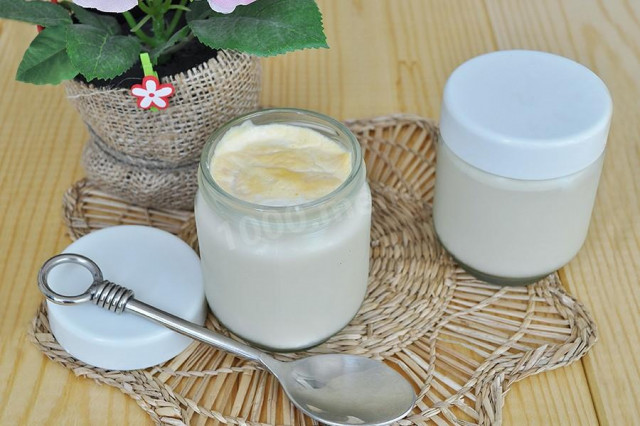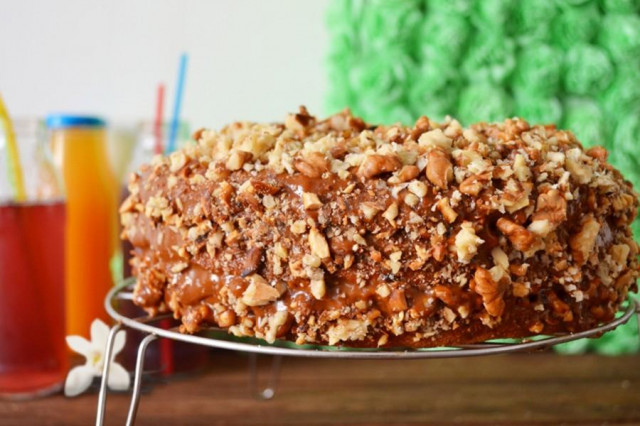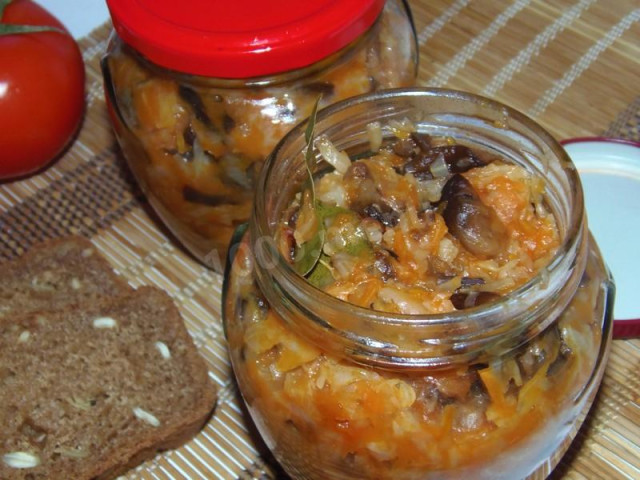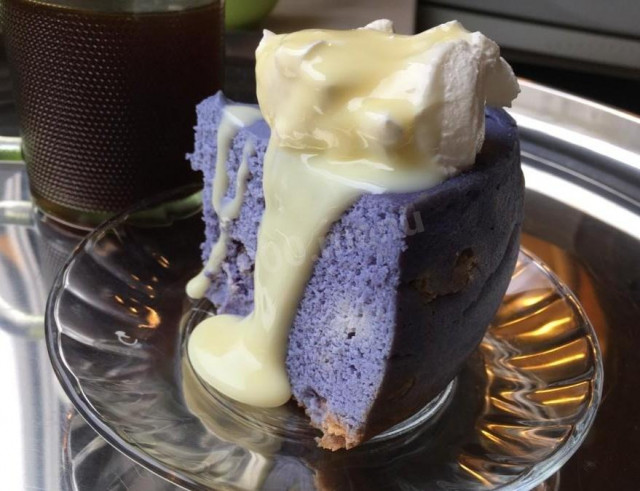Composition / ingredients
Cooking method
It's very easy to make a biscuit without eggs. To begin with, pour the milk into a bowl of milk, add sugar and stir until completely dissolved. To make the process go faster, you can warm up the milk quite a bit.
Add flour to the milk in small portions, having previously sifted it. The process will greatly facilitate the use of a special mug for sifting flour. When the flour is mixed into the milk, we quench the soda with vinegar and add it to the dough. Stir until smooth with a fork or whisk.
We will bake the biscuit in a slow cooker, so it will bake well and definitely won't burn. Lubricate the walls and edges of the bowl with butter so that the cake does not burn. Pour the dough into a bowl, place it in a slow cooker, close the lid and cook on baking mode for 45 minutes. Readiness is checked with a skewer.
As soon as the biscuit is ready, you need to take it out of the bowl and put it on the grill to cool down. If you leave it in the bowl, condensation will begin to appear on the surface.
While the biscuit cools down, prepare the cream. Buttercream is the perfect choice for any cake. It impregnates the sponge cake well and holds its shape perfectly for decorating the top of the cake. The main element is cream cheese. You can take any of the ones sold in the store, the main thing is that when you start working, it should be well cooled. The oil, on the contrary, should first lie down at room temperature and soften well.
First put the butter in the bowl of the mixer, beat it for a couple of minutes at medium speed. Then add powdered sugar, work at high speeds of the mixer for about 10 minutes. The oil should completely turn white and double in volume.
Without stopping the whipping process, add cream cheese in small portions. Beat until smooth and send the finished cream to the refrigerator for stabilization for 2 hours.
When the biscuit has cooled down and the cream has stabilized, we can collect the cream. Cut the cake into two parts, put the lower one on a dish, lubricate with cream, cover with a second cake, lubricate it, making a thick layer. Decorate as desired, you can use berries, fruits or chocolate chips.
We leave the cake in the refrigerator for 2-3 hours and can serve it to the table.
Bon appetit!
Calorie content of the products possible in the composition of the dish
- Whole cow's milk - 68 kcal/100g
- Milk 3.5% fat content - 64 kcal/100g
- Milk 3.2% fat content - 60 kcal/100g
- Milk 1.5% fat content - 47 kcal/100g
- Concentrated milk 7.5% fat content - 140 kcal/100g
- Milk 2.5% fat content - 54 kcal/100g
- Whole durum wheat flour fortified - 333 kcal/100g
- Whole durum wheat flour universal - 364 kcal/100g
- Flour krupchatka - 348 kcal/100g
- Flour - 325 kcal/100g
- Granulated sugar - 398 kcal/100g
- Sugar - 398 kcal/100g
- Butter 82% - 734 kcal/100g
- Amateur unsalted butter - 709 kcal/100g
- Unsalted peasant butter - 661 kcal/100g
- Peasant salted butter - 652 kcal/100g
- Melted butter - 869 kcal/100g
- Wine vinegar (3%) - 9 kcal/100g
- Vinegar 9% - 11 kcal/100g
- Balsamic vinegar - 88 kcal/100g
- Apple vinegar - 14 kcal/100g
- Vinegar - 11 kcal/100g
- Cream cheese with 50% fat content - 349 kcal/100g
- Powdered sugar - 374 kcal/100g
- Baking soda - 0 kcal/100g

